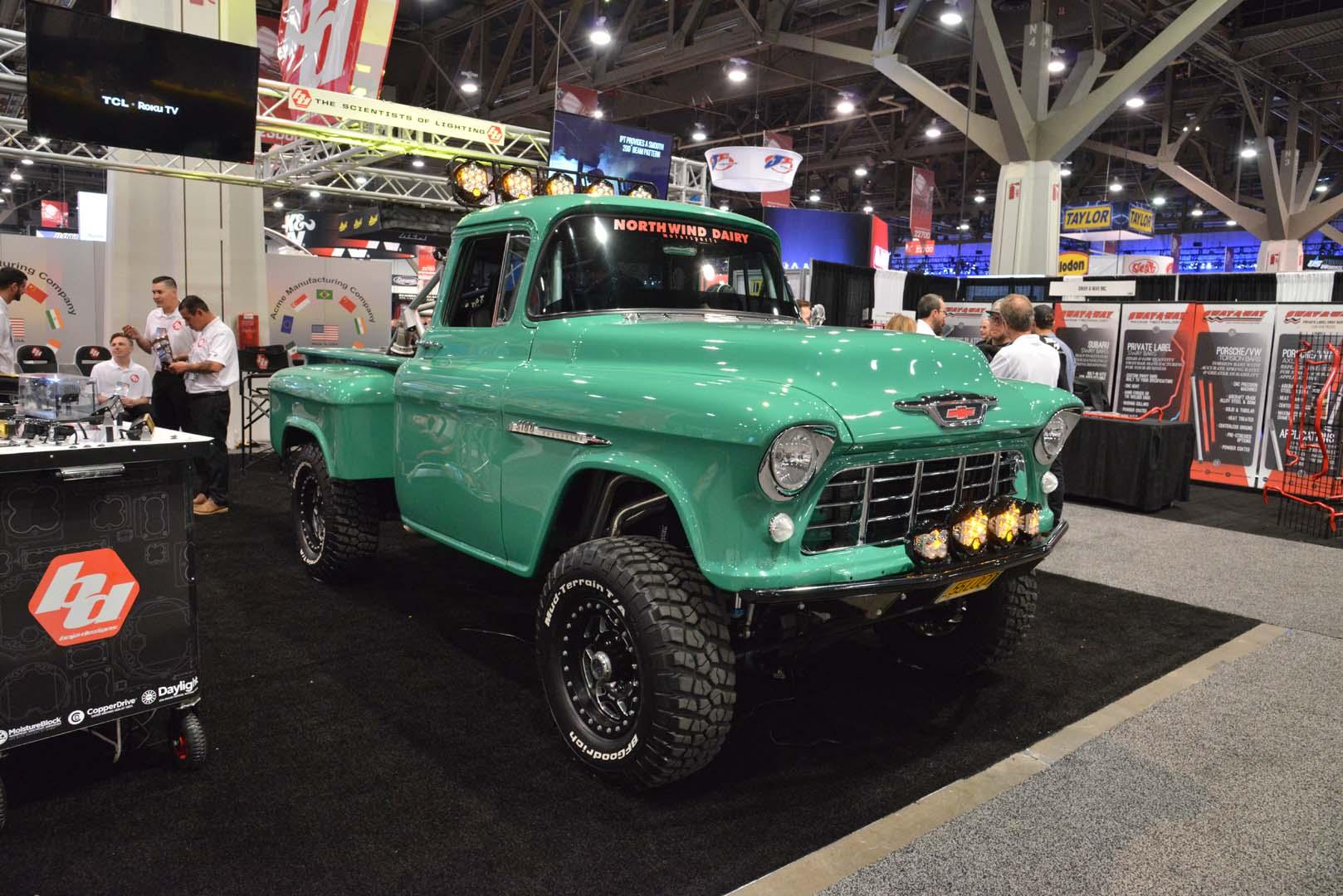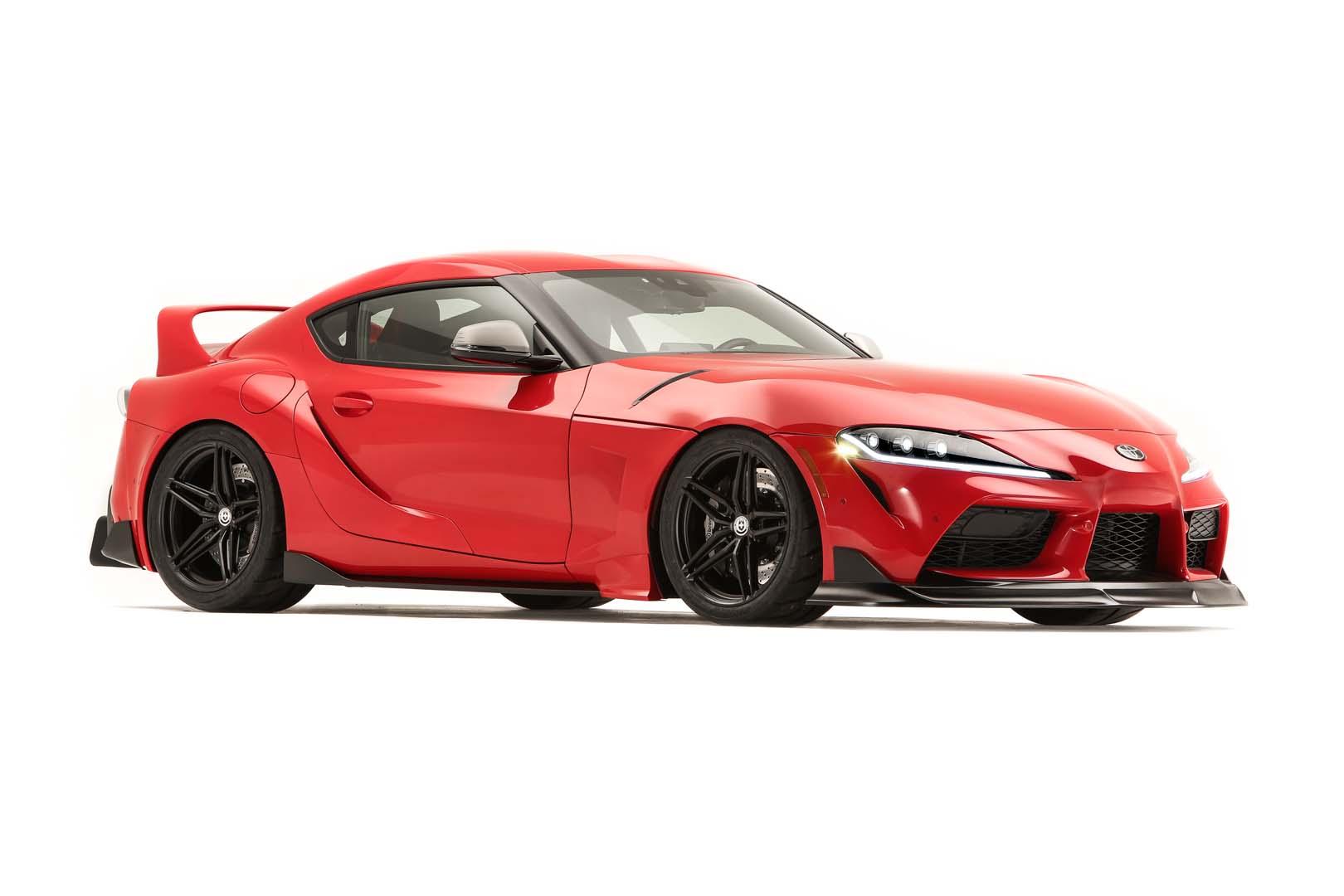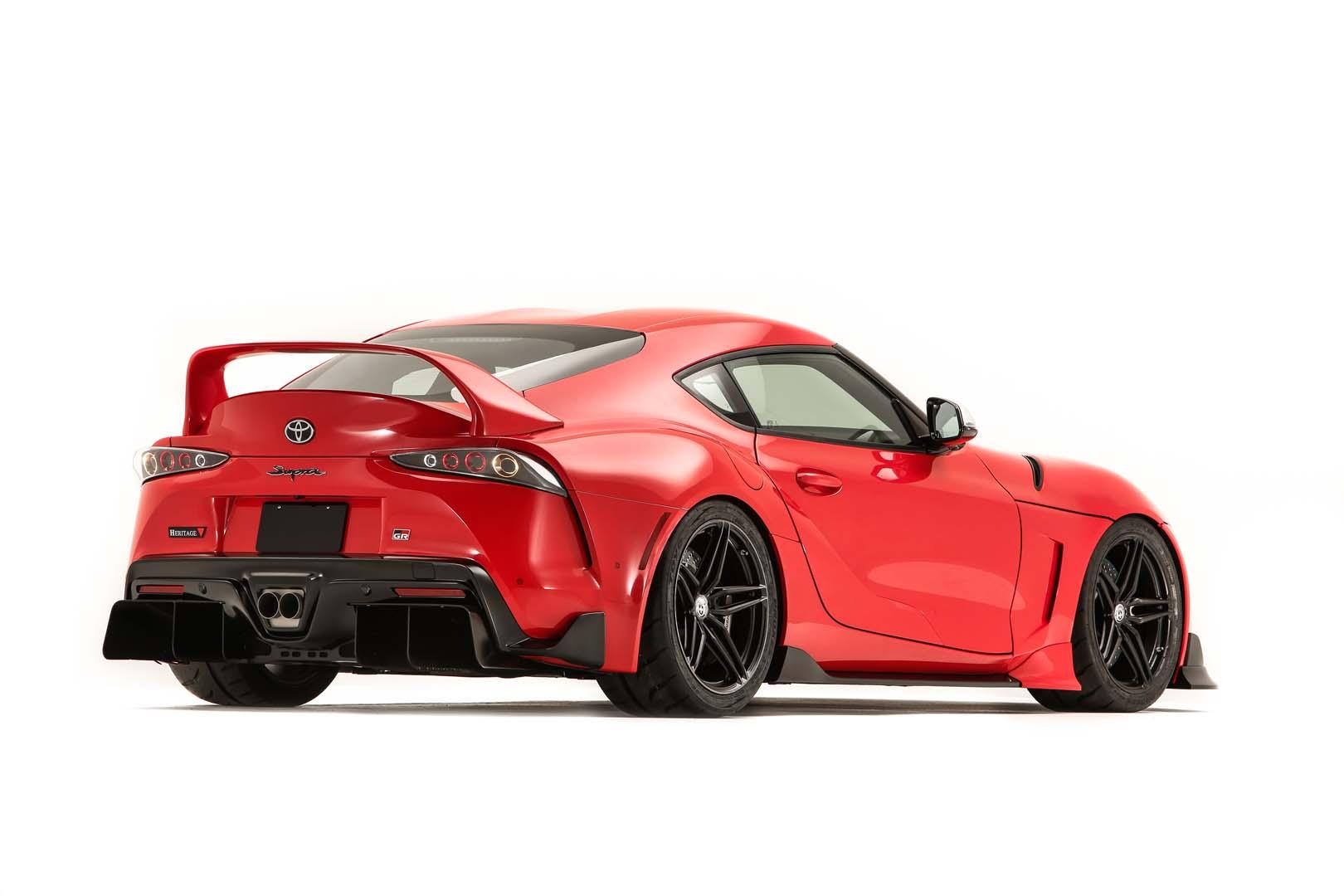REPORT – 2019 SEMA Show
Words: Mike Ryan
Photos: Newspress UK, SEMA Media, various manufacturers







Every year since 1967, the Specialty Equipment Market Association (SEMA) has presented the latest products from the automotive aftermarket industry - products that enhance the performance, styling, comfort, convenience and safety of cars, trucks and SUVs.
At that first show, held in Los Angeles, a grand total of 98 companies exhibited. Now there are close to 2,400 companies exhibiting and the show covers a massive 1.2 million square feet of the Las Vegas Convention Centre. The growth of the show reflects the automotive aftermarket industry that’s now worth an estimated US$44.6 billion.
And while the SEMA Show is a trade show and not a public event, it’s become something that plenty of car enthusiasts want to get into. The reason they want to get in is not so much for the new products and future technologies, but for the cars that many companies use to demonstrate their wares.
For outsiders, SEMA is a car show first and foremost. And to be honest, a lot of the trade and media representatives (around 3,300 media reps annually attend) see it the same way, too.
In terms of those display cars, you’ll see just about everything, from classic American muscle to European exotica, as well as a LOT of pickup trucks. There’s also plenty of oddities and rarities each year as exhibiting businesses aim for something different to bring attention to their stand.
The major American automotive manufacturers – Ford, Chrysler and GM – get involved to varying degrees each year, too, as do import brands, like Honda, Hyundai and Toyota, depending on whether the manufacturer has new models to push.



The Supra Show
This year, Toyota was at SEMA in a big way and their massive stand was almost entirely devoted to the new Supra, with a dozen examples on show. In fact, with a reported 50 modified and accessorized examples on display, it seemed like there were Supras EVERYWHERE at SEMA this year!
Toyota’s display included the following:
GR Supra GT4 – As the name makes clear, this is a contender for the GT4 racing category and was built by Toyota’s competition arm, Toyota Gazoo Racing.
A modified front and rear spoiler are what you’d expect in a racer, but what is unusual is that these components are made from hemp and flax, instead of carbon fibre to, allegedly, reduce environmental impact.
The engine and trans are the same as the road car, but with a motorsport-specific ECU, competition suspension and axles, a limited-slip diff, high-performance brakes and racing wheels and tyres.
In the GT4’s stripped-out interior, there’s a roll cage, OMP seat, TMG steering wheel and Bosch dash.
Unlike some of the other Supras on display, the GT4 is not just a concept or design study: it will go racing in 2020 and Toyota will make it available to privateers.
GR Supra 3000GT Concept – Created by Toyota Customising and Development (TCD), the 3000GT Concept reimagines the TRD 3000GT Supra aero kit from 1994 on the current platform.
With bodywork inspired by the original, the 3000GT Concept also features a custom HKS exhaust system, TEIN adjustable suspension, 19-inch TWS Motorsport wheels and Toyo Proxes R888R tyres.
Inside, race-spec Bride Xero CS seats are fitted and the speakers for the Pioneer stereo are upgraded.



GR Supra Performance Line Concept – A subtler take on Supra modification, the Performance Line Concept is another TCD creation, with the focus on bringing motorsport aerodynamic tech to the street.
Larger side winglets, a lower front lip spoiler, side skirts and door garnishes are all aimed at improving the car’s aerodynamic efficiency. The front winglets are repeated at the rear and there’s a bootlid spoiler, too.
Unique 19-inch wheels, Michelin Pilot Sport tyres and a custom HKS exhaust are other features, while the interior is kitted out with Bride racing seats.
GR Supra Heritage Edition – One half of a build-off competition between Toyota USA’s Group VP Ed Laukes and NASCAR commentator Rutledge Wood, this creation is Laukes’s homage to the MkIV Supra.
While it came from a Toyota exec, the actual build of this concept was done by Motorsports Technical Centre, LG Motorsports and Beree Cox Design.
Signature features include an integrated front splitter, MkIV-style rear spoiler and functional rear diffuser, with slots cut aft of the front wheelarches to further improve aero efficiency. Custom head and tail lights were also designed to resemble the MkIV.
To ensure wide (19x11 rear and 19x10.5 front) wheels could fit without a widebody kit, MTC replaced the factory suspension with a custom, inboard-mounted package, while a stock turbocharger was modified to produce more airflow for the stock engine. Complementing this is a custom air intake, 3-inch exhaust system and ECU recalibration that results in more than 500hp (372kW).
GR Supra HyperBoost Edition – Rutledge Wood’s foil to the Ed Laukes Heritage Edition, the HyperBoost Edition was built primarily by Rick Leos.
The 20-piece carbon fibre widebody kit that Leos designed and made for this car is all bolt-on, bolt-off, so it can be fitted and removed without drilling the bodywork. A more permanent change was the carbon fibre roof panel in place of the factory steel roof.
The wider wheelarches are filled by three-piece wheels (20x10 front, 20x12 rear) fitted with Continental ExtremeContact Sport tyres, while the factory suspension has been replaced with KW Automotive adjustable coilovers.
Boost Logic fabricated a new exhaust manifold to allow a repositioned Garrett turbo, custom downpipe and titanium exhaust to be fitted. The result is a claimed 750hp (559kW) – more than double the new Supra’s standard output. Brembo brakes with 6-piston calipers ensures that extra power can be reined in.




GR Supra Wasabi Concept – The creation of the Toyota Genuine Accessories Team, the Wasabi is a testbed for future accessories.
An aero package, created by Five Axis, is made up of front and rear winglets, sideskirts and a high-mount rear spoiler, but the most notable addition is the “Super Single” centre-exit exhaust system integrated into the rear diffuser.
Custom 20-inch rims are specially-designed lightweight units, shod with Michelin Pilot Sport 4S tyres, while the brakes have been upgraded with Brembo B-M calipers and slotted two-piece rotors – 405mm front and 380mm rear.
Adjustable Ohlins Road & Track shocks were fitted in place of the factory suspension and there’s a Toyota accessory strut tower brace, too.
As well as these concepts, Toyota also presented their GR Supra Racing Concept from last year, the Supra pace car currently in use for the NASCAR Xfinity Series, and their upcoming Supra Xfinity Series racer: a slab-sided brick which does away with all the production model’s bumps and curves to suit the category’s aero parity rules.


Aussie, Aussie, Aussie
While it’s very much an all-American affair, there’s still room for some Aussies at SEMA. Those with cars on show this year included Mario Ciarrochi, who in a ‘Double Aussie’ effort, sent his ’72 Valiant VH Charger over to the show. Built by Justin Hills of Hills & Co Customs, it no doubt caused some confusion when it was displayed at the Mothers booth - Aussie Chargers are thin on the ground over there!
Finished in Ferrari ‘Rosso Corsa’ paint, there are plenty of subtle body mods on this creation, including a carbon fibre bonnet, while a beefy 540ci V8 resides under that bonnet.
Kees Weel’s ’35 Chevrolet coupe was built by Peter Fitzpatrick over a C6 Corvette chassis and running gear, meaning the body needed some modifications to suit, primarily widening the guards to fit the wheelbase. Other body mods included a roof chop and subtle sloping of the rear.
Fine attention to detail and some complex machining of billet parts, like the wheels and grille, was rewarded with Weel’s coupe winning ‘Designer’s Choice’ in the 2019 Chevy SEMA Design Awards that pick the top six Chevrolet vehicles amongst hundreds on display.
Rob Zahabi’s ‘Havoc’ 1970 Dodge Challenger was in the Meguiar’s booth and came to the US fresh from Summernats and MotorEx wins. Rob’s second SEMA showcase vehicle, following his Chev Nova, the Rides by Kam-built Challenger used a similar Pro-Charger supercharger to the Nova, this time fitted to a 572ci big block Hemi.
Insanely detailed inside and out, the Challenger sits on airbags and custom wheels and is as good as anything coming out of workshops on the other side of the Pacific.
Finally, Darren Sheldrick’s ’39 Dodge may not have had the finish and polish of the other Aussie entries, but it made just as much of an impact. Entered in the Ratical Rod Build Off/Drive Off that pits teams from the US and around the world against each other, Sheldrick and his team at Double Jacks Garage had to build this rat rod – which is based on a hearse, by the way – in under nine months, ship it to the US, then drive it from Nebraska to Las Vegas for SEMA; a 1,400 mile one-way trip.
Powered by a twin-turbocharged 393ci Chev V8, with a TH400 trans, the ‘Ratical’ hearse sits on a custom chassis and features airbags all round. With comfort on the road in mind, power steering, air conditioning and a reversing camera were also fitted.





Ring’s Win
In this year’s sixth annual SEMA ‘Battle of the Builders’, the Ringbrothers from Wisconsin scored this major award for the first time with their ‘Valkyrja’ 1969 Camaro.
Covering Hot Rod, Sport Compact, Truck/Off Road and Young Guns (for builders under 27 years of age) categories, Battle of the Builders (BotB) pits some of the best bodyshops and custom builders presenting cars at SEMA against each other.
Starting with more than 300 entrants, the BotB field is whittled down to 40, then a Top 12, made up of three cars from each category. From there, the judges pass the score sheets over the builders themselves, who select the final four, made up of one car per category.
BotB runners up for the past few years, the Ringbrothers (Jim and Mike Ring) breakthrough winner was a no-expense-spared build, with 3D scanning, CAD design and CNC machining all employed to bring it to life. There’s an abundance of carbon fibre, too, with custom body touches from nose to tail (like a carbon fibre roof, notched windscreen and two fuel fillers – one for race fuel and the other for regular pump fuel), as well as some of the Ringbrothers’ own production parts.
Sitting on a Detroit Speed Engineering chassis, with Detroit Speed Engineering suspension and a John’s Industries 9-inch rear, Valkyrja is powered by a 416ci Wegner Motorsports LS3 with a Whipple supercharger, matched to a six-speed Tremec transmission and producing 890hp (663kW).
Wheels are custom HPE units, the unusual paint is a custom BASF mix called TOTOPKG Green and there’s a full custom treatment of the interior, too.
The other finalists included a 1955 Chevrolet pickup, 1971 Chevrolet C-10 pickup and a real rarity in the form of a 1968 Iso Rivolta.



















